Powering America’s National Parks With Solar
The adoption of solar has increased considerably over the past few years with annual energy production from solar technologies growing 39-fold from 2008 to 2017. Thanks to their superior reliability and falling costs, solar panels offer a robust and cost-effective means of generating clean, renewable energy in virtually any application or environment. More and more, home and business owners are switching to solar to reduce energy costs and their use of polluting fossil fuels, but they’re not the only ones enjoying lower electricity bills while doing right by the planet.
For America’s National Park System, the same motivations for going solar exist, along with a host of other unique drivers given the vast range of environmental extremes that exist in our nation’s wild places. Solar energy not only helps lower greenhouse gas emissions on these public lands, but it addresses the issue of powering the thousands of remote “off-grid” sites within the National Park System with minimal disruption to the environment.
Paired with energy storage technologies, high-efficiency solar arrays can power critical systems for several days, even under periods of low solar generation. This ensures enhanced safety for park employees and visitors as well as minimal downtime for any emergency telecommunications equipment. Microgrids and other distributed generation can also reduce the need for expensive power lines and other grid-tied electrical infrastructure that could potentially spark a catastrophic wildfire.
The U.S. National Parks Service is officially committed to environmental stewardship and has introduced renewable energy projects to many of its sites to lower energy costs and provide reliable power even at its most remote facilities. Check out some of these exciting projects below.
SOLAR PROJECTS IN THE U.S. NATIONAL PARK SYSTEM
- Grand Canyon National Park
- Mount Rushmore National Memorial
- Death Valley National Park
- Yellowstone National Park
- Rocky Mountain National Park
- Alcatraz Island (Golden Gate National Recreation Area)
- Great Smoky Mountains National Park
- Yosemite National Park
- Everglades National Park
- Natural Bridges National Monument
- Mammoth Cave National Park
- Denali National Park
Grand Canyon National Park
Arizona’s Grand Canyon National Park is world-famous for its mile-deep natural wonder and immense size—a massive 1,904 square mile area larger than the state of Rhode Island. The park is committed to reducing its environmental impact and has adopted a number of sustainable practices, including the use of renewable energy and water conservation efforts.
In 2009, eighty-four photovoltaic panels were installed at the Grand Canyon Visitor Center through a partnership between the National Park System and Arizona Public Service (APS). The panels are installed on both the Visitor Center’s roof as well as on adjacent ground-mounted platforms, providing a clean energy learning opportunity for the park’s nearly 5 million annual visitors. The system was initially designed to produce enough energy to replace 30% of the facility’s power and was estimated to save nearly 20 tons of greenhouse gas emissions and $2,500 annually for the park.
Funding for the panels and their installation, roughly $185,000 in project costs, was obtained through APS customers via APS’ Green Rates and the Arizona Corporation Commission’s Renewable Energy Standard.
“This photovoltaic system will not only create a more sustainable future for Grand Canyon National Park but will allow APS and the National Park Service to share with park visitors the vision of a more sustainable future for all of us,” said Park Superintendent Steve Martin.
And indeed, a more sustainable future is in the works following an expansion of the park’s renewable energy assets. In 2018, park operator Xanterra Travel Collection installed a new 38 kW solar power system on the park’s purchasing warehouse, offsetting roughly 65% of the warehouse’s energy needs.
Sustainable updates to Grand Canyon National Park and other Xanterra-operated parks are guided by “Our Softer Footprint“—Xanterra’s sustainability framework for providing experiences for guests and employees in an environmentally-friendly manner. The vision statement includes pillars that address the efficient and effective use of resources, sustainable building and operational practices, a zero-waste mindset, and sustainable options for guests. Xanterra also tracks environmental performance and data using an ISO 14001 audited program called Ecometrix, which ensures improved operations and incremental progress towards sustainability goals over time.
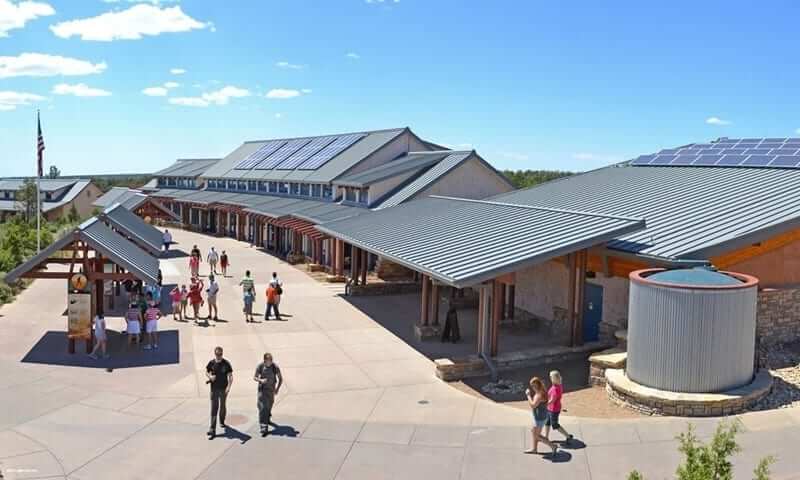
Mount Rushmore National Memorial
The Mount Rushmore National Memorial in South Dakota recently unveiled a massive 975-panel solar power system mounted on a carport structure, which will provide over half of the electricity used by the nearby Xanterra-operated Mount Rushmore restaurant and gift shop. The 346 kW “Thomas Jefferson Solar Canopy” is helping to support Xanterra’s bid to eliminate 50% of the attraction’s greenhouse gas emissions between 2014 and 2025. The solar carport will save the park operator $40,000 annually and is the second-largest solar installation in the state.
This solar addition supports other sustainability projects at Mount Rushmore, including a significant lighting renovation that has replaced nearly 2,000 fixtures with LEDs since 2017. The new lighting incorporates daylight detection and occupancy sensors to optimize load, along with programming capability to schedule lighting times. Additionally, a rooftop greenhouse was built above the gift shop to supply local produce. This year, the park was recognized for its 4-star Certified Green Restaurant—the highest level—making it only the second restaurant located in the National Park System to earn the designation.
“As many of Xanterra’s national park operations are literally at the end of the electric transmission line, renewable energy options such as solar provide us with reliable power while also decreasing our overall carbon emissions,” says Andrew N. Todd, president and CEO of Xanterra. “Our commitment to the environment and the communities in which we operate remains constant, and we will continually search for ways to collaborate with the National Park Service to modernize our infrastructure and implement new technologies that help us reach our ambitious 2025 goals.”

Death Valley National Park
At 300 feet below sea level and boasting the highest temperatures in the continental United States at 138 degrees Fahrenheit, Death Valley is a harsh environment for any equipment—even solar panels. Although Southern California’s Death Valley National Park featured a 1 MW solar array installed in June 2008 to provide power for the nearby historic Furnace Creek Inn & Ranch Resort, the extreme physical conditions in the park resulted in the system failing prematurely.
Recognizing these challenges and desiring to maintain the operation of their asset, Xanterra enlisted Independent Power (IPS) to provide a thorough electrical engineering report detailing the physical and electrical state of the equipment. IPS provided recommendations for maximizing production for the aging system, including a major overhaul, which saw the replacement of all the old, failing Sharp PV modules with the latest SunPower SPR360 high-efficiency modules, nearly doubling the system’s overall size to 2 MW. IPS also provided support for Xanterra’s new interconnection agreement with Southern California Edison for the upgraded PV system.
Equipped with superior SunPower Maxeon cell technology, the resort is now able to generate more energy over a greater range of temperatures, light angles, and spectrums, turning the valley’s abundant sunshine into clean electricity for visitors to the area.
The newly enhanced system remains in a secluded area surrounded by the Furnace Creek Golf Course near the Furnace Creek Resort, which has been welcoming guests since the 1930s. Today, the Death Valley system is one of the largest solar photovoltaic systems in the tourism industry.
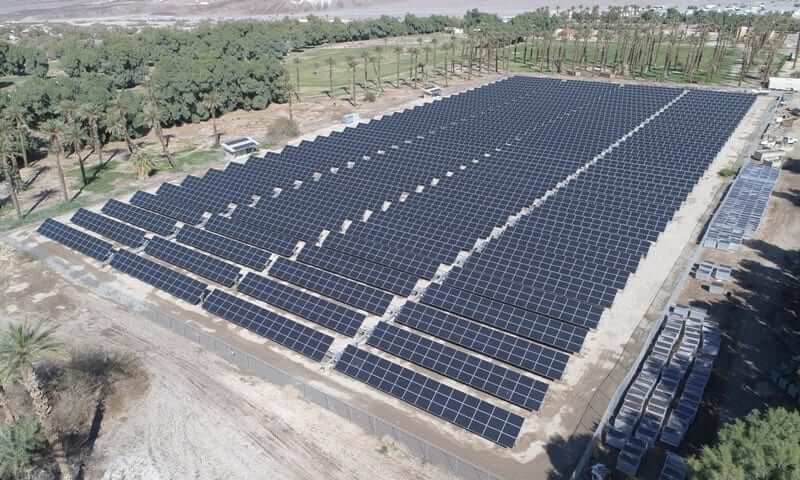
Yellowstone National Park
The oldest of the world’s national parks, Yellowstone National Park saw over 4 million visitors last year and is well known for its diverse ecosystems and geothermal activity. The 3,500 square mile wilderness is home to over half the world’s hydrothermal features including geysers, hot springs, mud pots, and fumaroles kept active by one of the world’s largest calderas beneath the region.
Yellowstone is a World Heritage Site and is famous for its many conservation efforts and the National Park Service’s commitment to making sustainability a central part of any operational decisions. The staff at the park strive to demonstrate leadership in environmental stewardship by conserving resources and decarbonizing facilities to preserve the natural wonders of the Yellowstone Valley for future generations.
Despite being the largest consumer of energy in the National Park System, Yellowstone boasts a series of energy, fuel, and water conservation initiatives to cope with the high visitor traffic and the extreme environmental conditions of the region. Solar panels have been installed in Bechler Ranger Station (9 kW), a contact point with the backcountry, and Lamar Buffalo Ranch (44 kW), where Yellowstone’s buffalo population was brought back from near extinction.
Installed in 2011, the Bechler Ranger Station portable solar power system provides 98% of the electricity needs for the area and has drastically reduced air and noise pollution by virtually eliminating fossil fuel use. The system integrates with a 20 kW backup propane generator and a 2,500 amp-hour battery storage system. The reduced fuel consumption has also cut the number of annual maintenance trips required for the generators to only three, saving the National Park Service additional resources.
The park has several other small-scale renewable energy systems scattered throughout the wilderness, and park operators say they will continue exploring additional solar opportunities.
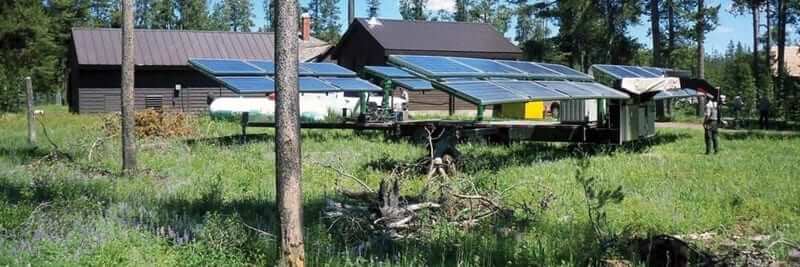
Rocky Mountain National Park
As a UNESCO International Biosphere Reserve, Rocky Mountain National Park in Colorado has a commitment to sustainability and green technology, including solar energy. With more than 600 separate buildings scattered across the remote terrain of the park, there is ample potential for solar energy and an operational need for distributed forms of energy generation to preserve the pristine wilderness.
Much like Death Valley, Rocky Mountain National Park has unique and extreme environmental conditions, albeit on the opposite end of the temperature scale. Areas of the park can experience subzero temperatures and hurricane-force winds as well as heavy snow load as high as 20 feet.
In 2018, Xanterra commissioned Independent Power to design and install a 55 kW SunPower high-efficiency solar system with a 32 kWh battery storage system to power the Trail Ridge Store at the top of the park’s Trail Ridge Road—the highest continuously paved road in the United States. At 11,798 feet above sea level, the project is the highest such system of its kind in the United States and likely the world.
“We’re just trying to do anything and everything in our power to make the store have a softer footprint,” said Nancy Strong, general manager at the Trail Ridge Store. “We just feel these are improvements for all of our guests as well as the park.”
“…Because we were solely relying on generator power from the park service, we would have outages in the store. This will enable us to not have that. We would like to get off the park service generator completely. It’s loud, it pollutes into the system, and it has to be run with diesel fuel, and for the park’s economy. I think it would be better to get off the generator.”

An additional goal of the system was to reduce dependence on the building’s existing 125 kW diesel generator, which has now been integrated to solely provide backup power during periods of prolonged lack of sunshine. The 153-panel array is estimated to save the National Park System 5,500 gallons of diesel fuel each year and provides nearly all of the power consumed by the Trail Ridge Store.
An in-store energy panel provides real-time generation data and energy usage on the Trail Ridge Store system.
In 2020, Xanterra Travel Collection won a Larimer County Environmental Stewardship Award for the solar array and other sustainability initiatives at the Trail Ridge Store.
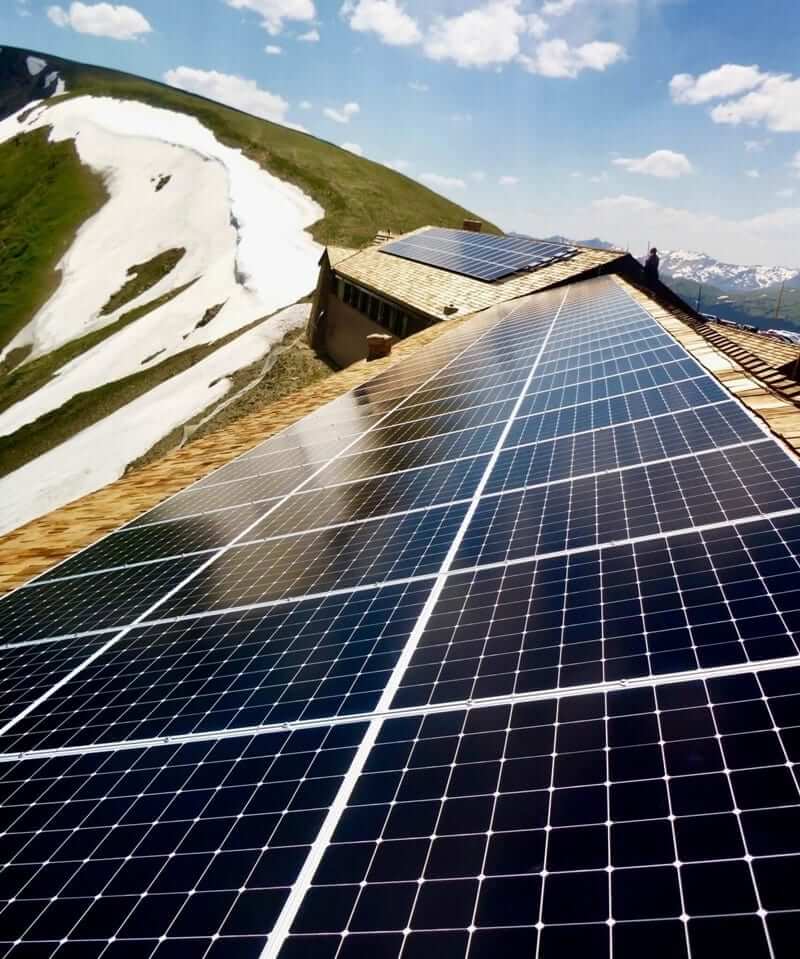
Alcatraz Island
(GOLDEN GATE NATIONAL RECREATION AREA)
California’s famous Alcatraz Prison housed plenty of notorious inmates over the years including the ruthless Al Capone, but today the 22-acre Alcatraz Island is home to a National Historic Landmark operated by the National Park Service and one of the largest microgrids in the nation.
A 305 kW solar array sits on the roof of the main prison building and connects to a battery bank and power inverters, which helps to reduce the reliance on costly and polluting diesel generators. The 959-panel system has reduced fuel consumption on the island by nearly 45% since 2012 and has saved more than 25,000 gallons of diesel per year. The 480 batteries collectively can store 1,920 kWh of energy.
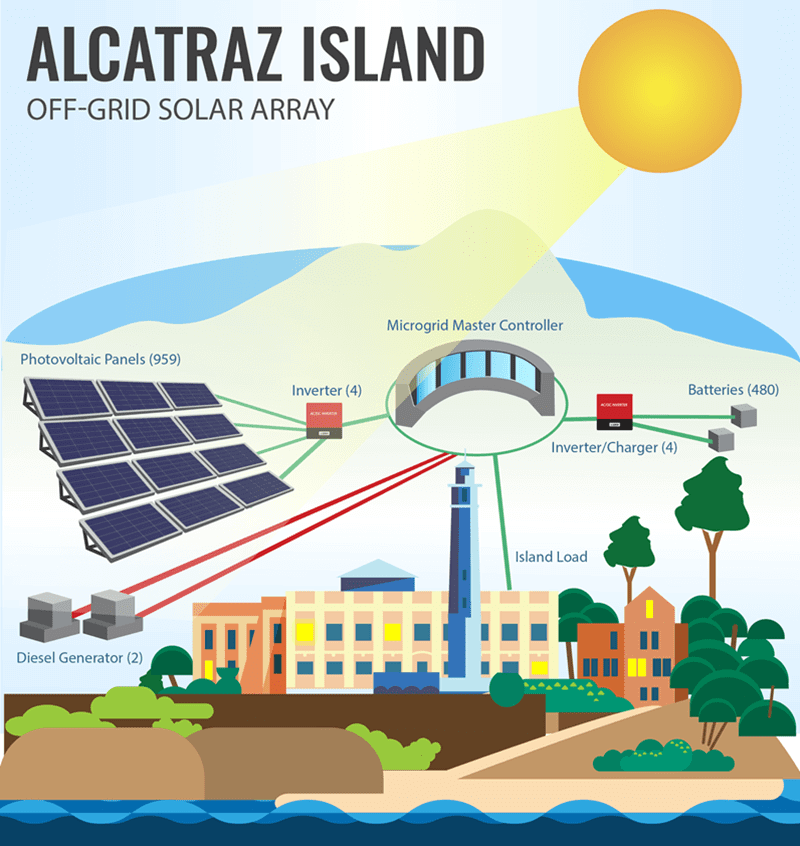
Providing electricity to Alcatraz has historically been a challenge both during its 29 years operating as a prison and under the management of the National Park Service. Diesel generators replaced the island’s power supply after a ship’s anchor cut the original underwater cable in 1963. As a result, the island is completely cut off from the rest of the Bay Area and nearby powerlines. In 2007, researchers at the University of Washington concluded that an undersea transmission cable to San Francisco would be too expensive, reinforcing the argument to switch to solar PV.
Prior to the installation of the solar and energy storage, the island received shipments of as much as 2,000 gallons of diesel a week to support its electricity needs. In 2013 alone, the solar pv system was estimated to offset 46% of Alcatraz’s diesel use, saving the National Parks Service roughly $207,000 in fuel costs.
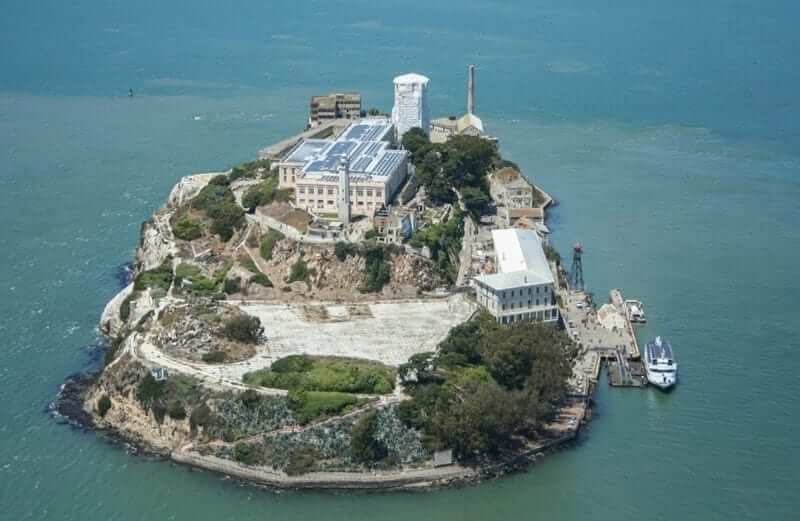
Great Smoky Mountains National Park
For the past 20 years, Great Smoky Mountains National Park has been the most visited national park in America, with over 11.4 million visitors in 2018 alone. The well-attended park straddles North Carolina and Tennessee, encompassing Appalachian lands and the region’s historic mountain culture.
Given its remote terrain, Great Smoky Mountains National Park is a perfect proving ground for distributed energy generation, and indeed, the park operators are no strangers to solar power. The park features several buildings that were early adopters of photovoltaic technology. In early 2018, the park saw the completion of a 36 kW solar power system linked to an existing battery bank and generator system at the historic Cades Cove recreation area.
This project is expected to reduce greenhouse gas emissions by 23 tons annually, saving the park operators $14,000 a year in reduced fuel expenses. The system also eliminates the noise caused by the diesel generators except when backup generation is required.
Great Smoky Mountains National Park also features a 10 kW solar plus storage microgrid installed in 2017 which powers a 60-ft communication tower at the top of Mt. Sterling. The microgrid eliminated the need for a long power line whose sole purpose was to connect the remote communications station with the electric grid of Haywood County, North Carolina.
“Having the line going up the mountain for that long, through all that vegetation in the national park, there was a lot of reliability issues, and these issues were triggered when there was an outage,” said Sherif Abdelrazek, senior engineer at Duke Energy, the utility servicing the line.
“It benefits us because we’re removing unnatural governance from an area that we can now let go back to its natural state,” said Mark Collins, Environmental Protection Specialist at Great Smoky Mountains National Park. “I think visitors will benefit because that visual of a power line will no longer be there.”
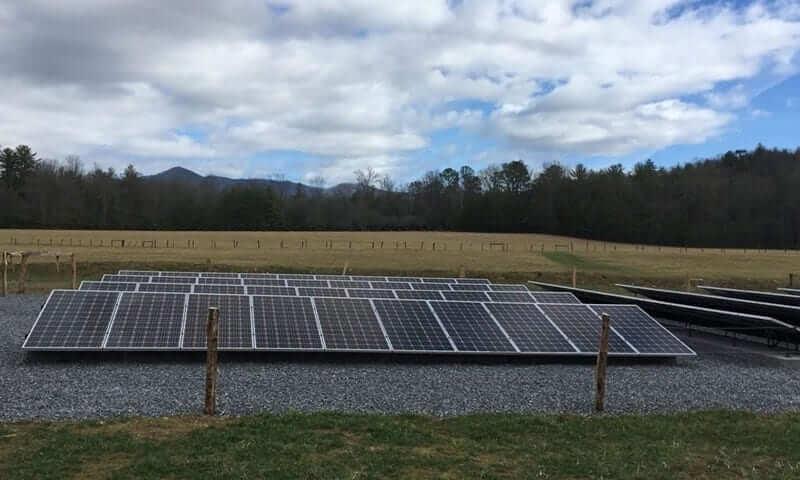
Yosemite National Park
One of the parks that inspired much of the conservationist movement, California’s Yosemite National Park, is a sprawling 1,200 square mile wilderness that features striking natural wonders and rich human history. First protected in 1864, Yosemite attracts nearly 4 million visitors a year drawn by the many scenic vistas that make up the U-shaped valley.
In July 2011, the 672 kW El Portal Photovoltaic Project came online, providing the National Park Service with an estimated 800,000 kWh of energy per year. The El Portal complex is located on the western edge of the park and features offices, a warehouse, a vehicle maintenance facility, and other park operations. At the time, this system was the largest grid-connected photovoltaic system within the National Park System.
“This project exemplifies how Yosemite, the Pacific West Region, the National Park Service, the Department of the Interior, and the President are trying to lead the way in making our facilities climate-friendly,” said Ken Salazar, former Secretary of the Interior.
This 2,800-panel project was funded through the American Recovery and Reinvestment act and cost $5.8 million. The generation from the solar canopy over the parking lot, the warehouse, and the wall-mounted arrays at the complex is expected to offset 12% of the park’s total energy demand.
“With its investments of Recovery Act funds, the Department of the Interior and its bureaus are putting people to work today to make improvements that will benefit the environment and the region for many years to come,” added Salazar.
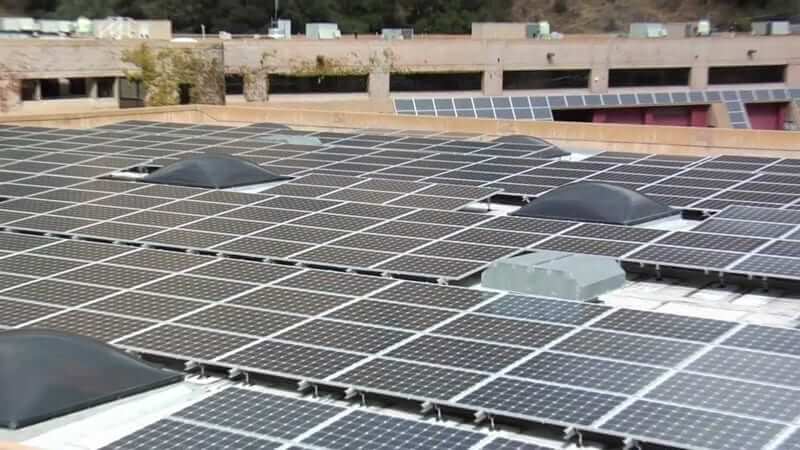
Everglades National Park
The largest tropical wilderness in the country and largest wilderness area east of the Mississippi River is preserved in Florida’s Everglades National Park. Home to over 1.5 million acres and 350 species of birds, the park attracts roughly one million visitors a year looking to explore the rich, subtropical ecosystems of Southern Florida.
In 2018, the park announced a new 12 kW solar power system for the Shark Valley Visitor Center installed thanks to a $25,000 donation from Florida Power & Light (FPL). The system is expected to offset approximately 40% of the center’s energy demand. Shark Valley Visitor Center offers informational brochures, educational displays, and a park video as well as a gift shop with books, postcards, and other available souvenirs.
“When you’re surrounded by an oasis of green space like the Everglades, opportunities abound to tell engaging stories about how nature powers this amazing ecosystem,” said South Florida National Parks Trust Chairman Wayne Rassner—fundraising partner for the park. “Adding solar power to the mix is a perfect fit.”
Although the 12 kW system is the largest solar electric system in Everglades National Park, solar technology has been a feature for some time. In addition to a solar-powered water heating system at the nearby Flamingo campgrounds that suffered damage during a recent hurricane, the park also maintains several solar-powered light posts at the Ernest F. Coe Visitor Center parking lot.
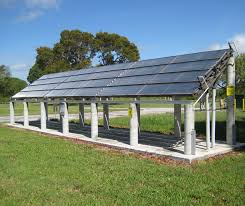
Natural Bridges National Monument
One of the few parks in the country to host astronomy-focused discussions, Natural Bridges National Monument in Utah was named as the first “International Dark Sky Park” by the International Dark-Sky Association. Through a partnership with MIT, the National Park Service, and the Department of Energy, a 100 kW system was first installed at the monument in 1980—the world’s largest such system at the time. The system would later be downsized to 50 kW in 1992 with the addition of a 40 kW diesel-fired generator and a more efficient system design.
Today, the Natural Bridges National Monument solar PV system provides 90% of the electricity needs for the park’s employee housing, maintenance shop, and visitor center—the latter being just across the road from the system and a viewing platform complete with an audio recording explaining the photovoltaic process. The total annual system output is roughly 130,000 kWh.
Thirty-nine deep-cycle lead-acid batteries also support the system with a combined capacity rating of over 600 kWh. The National Park System approximates that 450 kWh would be enough to operate the park for about two days.

Mammoth Cave National Park
The world’s longest known system of caves, Mammoth Cave National Park in Kentucky has several solar projects currently in operation with others waiting for funding. The park was named a Center for Environmental Innovation in 2001, and since then, park managers and staff continue to look for ways to make the park more sustainable and environmentally friendly.
In 2012, a new Visitor Center was built that features solar panels that offset roughly a quarter of the facility’s annual electricity use. Today, the park utilizes additional solar power systems to power parking lot lights, park offices, and employee housing.
“Any new construction we’re looking at or buildings we’re redoing, we consider if solar panels are something we can use,” said park spokeswoman Molly Schroer.
The park’s next phase of solar projects—including a partially-built system for electric vehicles—is still in development pending funding.
“Our hope is to have some of the projects started by 2021,” Schroer added.
Each year Mammoth Cave National Park attracts over 2 million visitors and preserves Mammoth Cave and the rest of the cave system, part of Kentucky’s south-central hill country, and the scenic river valleys of the Nolin and Green rivers.
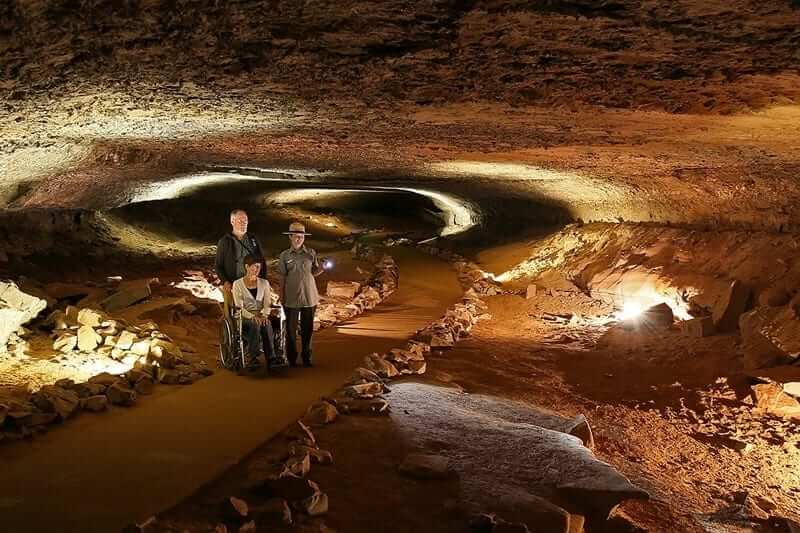
Denali National Park and Preserve
Home to the tallest mountain in all of North America and more than 37 species of mammals, Denali National Park and Preserve covers more than 6 million acres of wilderness in the heart of Alaska. Each year, more than 400,000 visitors travel to the park to travel down the 90-mile Denali Park Road and partake in the park’s many popular summer and winter activities.
At Mile 66 of the Denali Park Road, visitors arrive at the Eielson Visitor Center where they can participate in daily ranger-led programs, enjoy a small art gallery celebrating the local natural wonders, and potentially even catch a stunning view of Denali and part of the Alaska Range. It is there you will also find a number of solar photovoltaic panels above the Visitor Center generating renewable energy on-site and integrating with a nearby micro-hydro generation system and a battery bank.
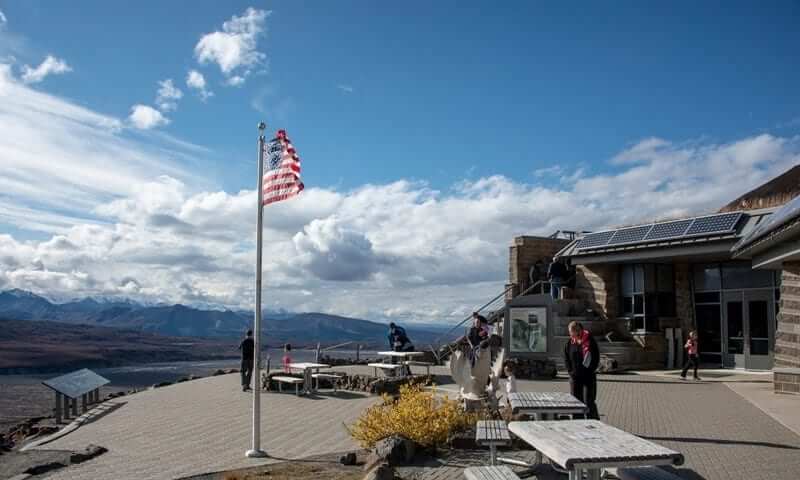
The Eielson Visitor Center experienced a major redesign in the mid-2000s to accommodate growing visitation and to better withstand the harsh winters, eventually opening to the public in 2008. The renewable additions, along with enhanced, minimalist design and other conservation measures earned the Visitor Center a LEED Platinum rating from the U.S. Green Building Council (USGBC). At the time, it was the first building in the National Park System to earn that level of the designation and was one of only two LEED-accredited buildings in their portfolio.
However, Denali National Park is no stranger to solar energy, having installed a hybrid solar plus diesel system at Eielson in the late 1990s and a similar solar plus propane system at Wonder Lake in subsequent years. The park also utilizes smaller-scale solar technologies for remote sound monitoring and similar applications that require robust and reliable energy solutions.
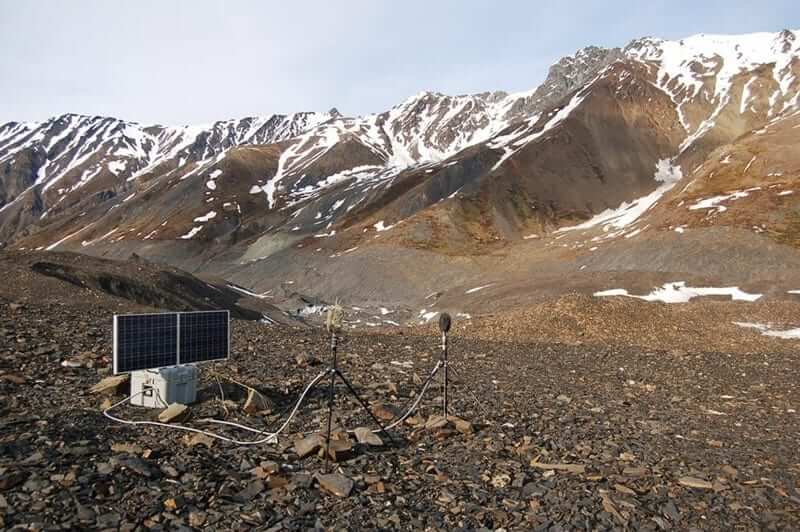
Learn more about the national parks featured in this article—including their sustainability work—on the National Park Service website.

